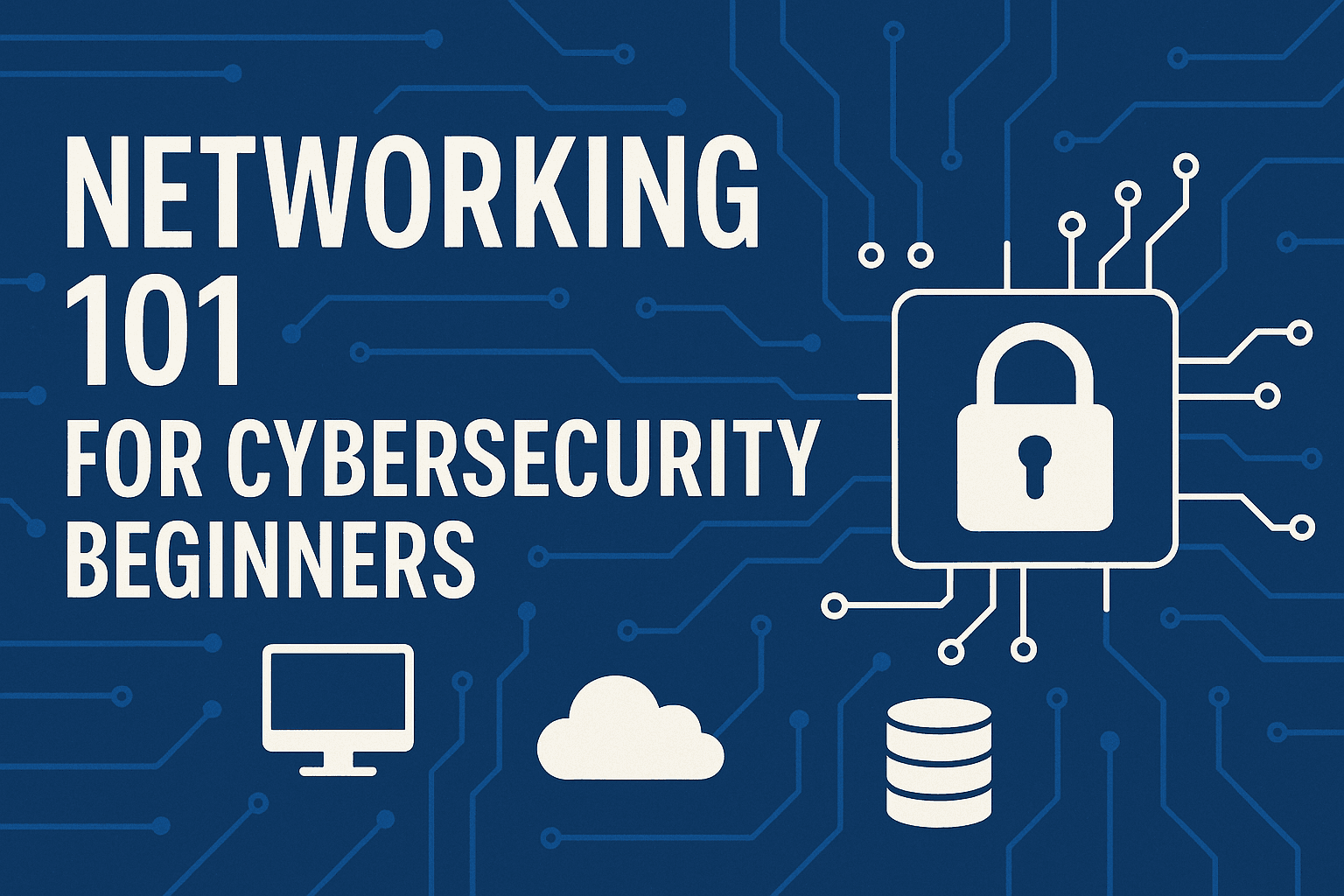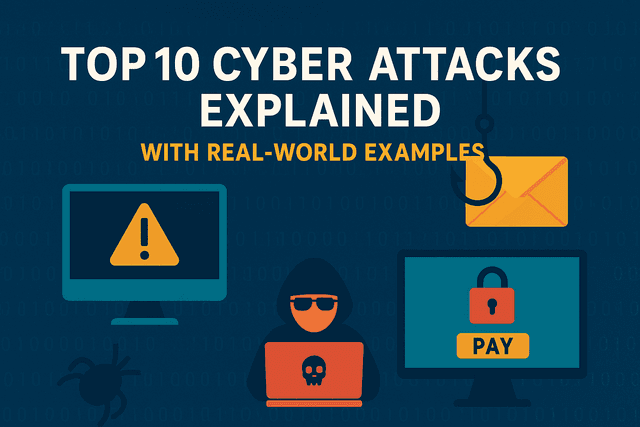Networking 101 for Cybersecurity Beginners

In the world of cybersecurity, one of the most essential foundations is networking. Whether you're defending a corporate infrastructure, analyzing suspicious activity, or testing for vulnerabilities, a deep understanding of how computer networks work is non-negotiable.
This guide breaks down the core networking concepts every cybersecurity beginner should understand—complete with real-world examples, industry relevance, and learning resources.
What Is Networking?
Networking refers to the practice of connecting computers, servers, and other devices so they can communicate and share resources. These connections can be wired (Ethernet cables) or wireless (Wi-Fi), and they form the basis of all internet communication.
At its simplest, a network enables:
- File sharing between devices
- Internet access
- Remote communication
- Security monitoring and control
Core Components of a Network
To understand how data moves across networks—and how attackers might intercept or exploit it—cybersecurity professionals must first master the key components:
1. IP Addresses (Internet Protocol)
An IP address identifies each device on a network. Think of it like a home address for a computer.
- IPv4: 32-bit address (e.g.,
192.168.1.1) - IPv6: 128-bit address, designed for scalability (e.g.,
2001:0db8:85a3::8a2e:0370:7334)
2. MAC Address (Media Access Control)
This is a unique identifier assigned to the network interface card (NIC) of a device. It's static and used at the data link layer for local network communications.
Example: 00:1A:2B:3C:4D:5E
3. Ports
A port is a logical endpoint for communication. Each service (like web traffic or email) uses a specific port number.
Common ports:
- Port 80 – HTTP (unencrypted web)
- Port 443 – HTTPS (encrypted web)
- Port 22 – SSH (secure remote login)
- Port 53 – DNS (domain resolution)
4. Protocols
Protocols are standardized rules that govern data transmission between devices.
Key protocols include:
- TCP/IP – Basic framework for internet communication
- UDP – Lightweight, faster alternative to TCP
- HTTP/HTTPS – For web browsing
- DNS – Resolves domain names to IP addresses
- SMTP/IMAP – For email communication
Why Networking Is Vital in Cybersecurity
Networking isn’t just about getting systems online—it’s about understanding how data travels, how attackers intercept it, and how to defend it.
Real-world cybersecurity applications:
- Detecting unauthorized access attempts via network logs
- Identifying open ports that could be exploited
- Monitoring suspicious data traffic patterns (e.g., unusual data transfer volumes)
- Setting up secure network architectures (e.g., firewalls, VLANs)
Without a strong grasp of networking, it’s nearly impossible to:
- Conduct vulnerability assessments
- Configure firewalls or intrusion detection systems (IDS)
- Understand malware communication methods (e.g., C2 servers)
Key Networking Concepts in Cybersecurity
Cybersecurity professionals focus on how to protect networks from threats. Here's how some core concepts connect to cyber defense:
1. Firewalls
A firewall is a security device or software that monitors and filters incoming and outgoing network traffic based on security rules. It acts as a digital barrier between trusted and untrusted zones.
Types of firewalls:
- Packet-filtering
- Stateful inspection
- Next-generation firewalls (NGFW)
2. Network Segmentation
This involves dividing a network into multiple smaller segments (e.g., internal, guest, admin) to isolate and control traffic.
Why it matters: If one segment is breached, others remain protected.
3. Intrusion Detection & Prevention Systems (IDS/IPS)
These systems detect (IDS) or actively block (IPS) malicious traffic or suspicious activity. They're crucial for spotting early signs of attacks.
4. Network Address Translation (NAT)
Used in routers, NAT hides internal IP addresses from the public, providing an extra layer of protection against external attacks.
Suggested Learning Path for Beginners
If you’re starting in cybersecurity, here’s how you can build your networking foundation:
-
Learn the OSI and TCP/IP models
Understand each layer (from physical to application). -
Practice subnetting
Learn how to divide IP ranges into efficient sub-networks. -
Use tools like Wireshark
Analyze real network traffic to identify protocols, sources, and threats. -
Explore TryHackMe labs
Practical, gamified environments that reinforce theory with hands-on challenges.
Conclusion
Networking is the backbone of modern cybersecurity. From understanding how data is routed across the internet to detecting and defending against threats, every cybersecurity practitioner must be fluent in the language of networks.
Whether you're just starting out or aiming to deepen your skills, mastering networking fundamentals is one of the smartest first steps in your cybersecurity journey.


